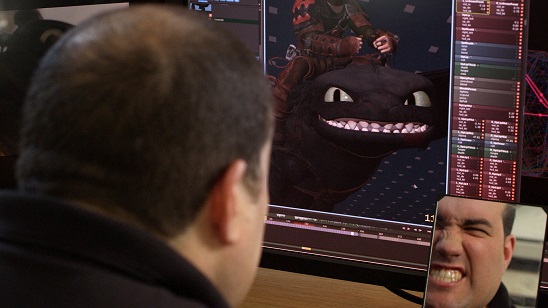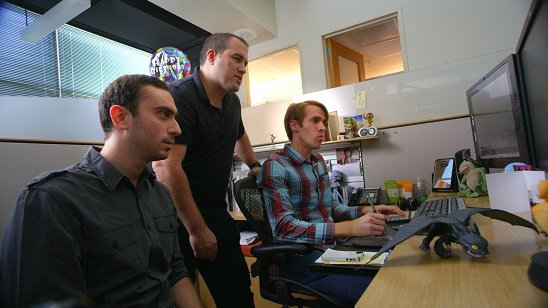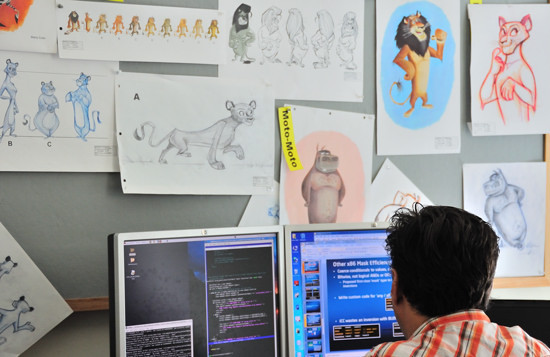How to tame a dragon using Intel technology?

Long before the NASA Apollo program brought the first man to the Moon, this name was given to the mythical deity of light, the Sun and the truth. Well, today Apollo (Apollo) is a collection of the most advanced animation technologies, first tested when creating a sequel to the animated hit of DreamWorks - “How to Train Your Dragon 2”. The Apollo platform, on the development of which DreamWorks and Intel have spent 5 years, is a complex of software tools that gives animators full control over the video sequence. Let's look at this set more closely.
A tool called PrEMO gives artists access to an unprecedentedly powerful multithreaded computational resource, allowing them to edit characters in the maximum resolution possible. Now the need for low resolution drafts has simply disappeared.
Torch, an interactive tool for controlling light and digital objects, helps you quickly shift focus into a scene by changing the lighting, giving it depth and originality. All this we can see in the cartoon "How to Train Your Dragon 2".
PrEMO allows artists to work with their characters almost in real time (up to 12 frames per second in edit mode) using their tablets and styluses. This makes the creative process more intuitive. Previously, you had to deal with curves and graphs that are controlled using tabular data. Now it is enough to capture the character, change any part of it, as required, create a keyframe and move on. Animation is done by hand again!
')

More recently, even drawing a simple movement, such as a smile or a blink, required a lot of steps. Cooperation with Intel has allowed DreamWorks to radically change the approach to creating animation by using new software technologies.
Optimized software runs faster and allows more iterations. Previously, the animators had to wait sometimes for several minutes while the changes in the single character were rendered. With Apollo, this time has been reduced so much that it is possible to work simultaneously with several characters.

The use of Apollo not only simplified the lives of artists and improved the quality of animation, but also significantly reduced the cost of producing the painting. By the way, the total rendering time of the cartoon was 90 million hours (taking into account parallelization, of course), a total of about 250 billion pixels were counted. The total amount of stored data was 398 terabytes. During the work, three studio data centers were used (two in the USA, one in India) and a cloud service for a continuous and optimally balanced execution of 70 million rendering tasks.
The collaboration between Intel and DreamWorks has been going on for over 10 years - the first collaborations were started back in 2001. In 2008, the film studio replaced its rendering farm platform from AMD to Intel Xeon. At the same time, it turned out that the software used was unable to squeeze the most out of the new hardware. To remedy the situation, Intel seconded a detachment of its programmers to help develop new software.


Matt Walsh is one of Intel’s engineers working on DreamWorks movies.
The technologies used in Apollo will also be useful in other industries that use 3D modeling, such as building design, aircraft, etc. With each new cartoon software will be improved, the benefit of the space for this seems almost limitless.
Source: https://habr.com/ru/post/229205/
All Articles